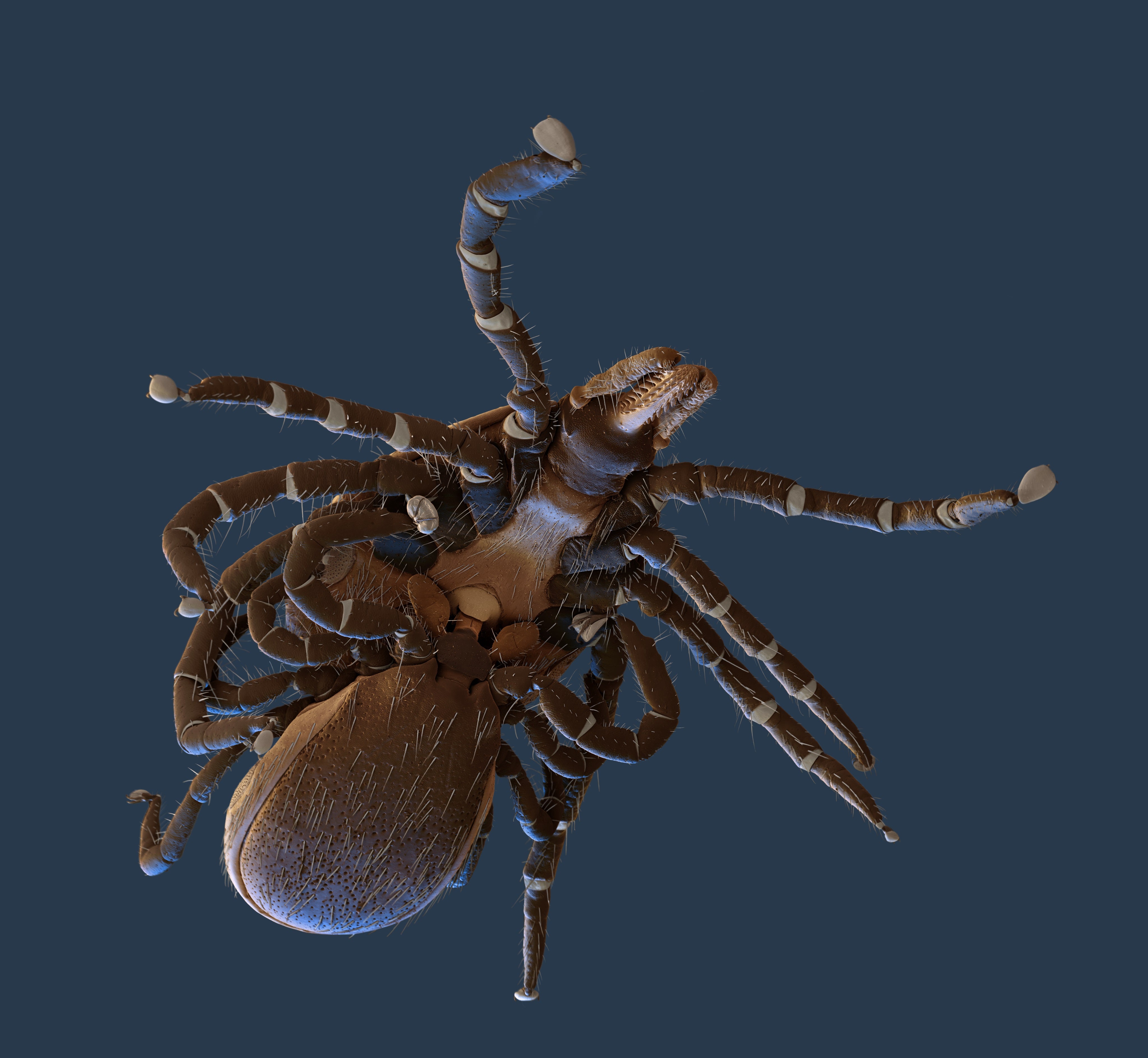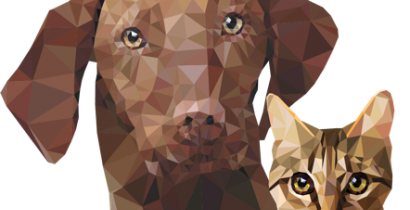Home -> Vectors -> Ticks -> Life Cycle
LIFE CYCLE
All ticks have four life cycle stages, the embryonated egg and the three active stages, larva, nymph (one or more) and adult. Sexual dimorphism is evident only in the adult stage; thus, reference to a male or female automatically implies that the individual is an adult.
Life Cycle Ixodidae
Life Cycle Argasidae
Egg
Larva
Nymph
Adult
References
Further Reading
LIFE CYCLE IXODIDAE
The life cycle of ixodid ticks is remarkably uniform throughout the family. All ixodid ticks are oviparous and have a single nymphal stage.
In most species, each active stage seeks a host, feeds, and drops off to develop in the natural environment (three-host life cycle). Only in a few species, fed juveniles remain and develop on the host, further shortening the life cycle. Such ticks are termed "two-host" or "one-host" ticks, depending upon whether one or more juvenile stages develop in this manner. Numerous variations in the basic tick life cycle plan occur.
Mating occurs exclusively on the host, i.e. when feeding, in all but species of the genus Ixodes. All ixodids except species of Ixodes require a blood meal to initiate the gonotrophic cycle.
Following mating, females feed to repletion, then drop from their hosts and, following a brief pre-oviposition period (except in those with a morphogenetic diapause), commence oviposition. Oviposition occurs in one continuous cycle of ovipositional activity in some sheltered microenvironment, e.g., under leaf litter, rotting vegetation, or some crack or crevice in a natural or man-made shelter, where females lay several thousand eggs.

Oviposition of an ixodid female tick
Egg production accelerates rapidly, reaching a peak within 3-5 days after commencement of oviposition, then again declines gradually; 90 % of the egg mass is deposited within the first 10 days, but small numbers continue to be passed for an additional 5-10 days. Although proportions vary among different species, more than 50% of the engorged, mated female body weight is converted to eggs during this process. Clearly, ixodid ticks are among the most prolific of all arthropods with regard to their ovipositional capacity.
Females die after oviposition, i.e., there is only one gonotrophic cycle.
Three-host life cycle
In a three-host life cycle each active stage repeats the pattern of host-seeking, feeding and off-the-host molting in the environment. It is the most common developmental pattern and characteristic for the vast majority of ixodid species.
Under favourable conditions in the natural environment, the life cycle of such three-host ticks, from the time of hatching of the larvae to the hatching of the next generation, can be completed in less than 1 year. However, climatic conditions and diapause may delay host seeking behaviour, development or the onset of oviposition, so that only one life stage can be completed each year. These environmental limitations can extend the duration of the life cycle to as much as 3 years (e.g., in Ixodes ricinus).
Following oviposition, the eggs undergo embryogenesis in the natural environment.
After hatching, the emerging unfed larvae disperse into the vegetation or nest environment to seek hosts. After finding appropriate hosts, the first parasitic phase of attachment, feeding and off-the-host molting in the environment commences. Larvae that are successful, attach and feed slowly; several days are required for a complete blood meal. The repleted larvae drop from their hosts, find a sheltered microenvironment and undergo ecdysis (= molting).
After emerging from the larval molt, the unfed nymphs seek hosts again (often similar hosts as those fed upon by the larvae), and the process of host finding, attachment, and repletion is repeated in the second parasitic phase on a second host. The engorged nymphs drop from their hosts and shelter in appropriate niches in the natural environment.
Following the nymphal molt, adult (female and male) emerge and initiate the third parasitic phase, attach to hosts, feed, mate, and the fully engorged females drop to oviposit in some sheltered microenvironment and die, completing the life cycle. Except for Ixodes spp., where mating happens in the environment, males usually remain to reattach, feed again, and mate with other females.
Larvae, nymphs, or repleted, detached females may enter diapause and remain intact for several months (e.g., over winter or, rarely, over summer), until appropriate environmental changes allows them to commence the cycle.
A very different pattern of development and mating behaviour occurs in the ixodid genus Ixodes, the only genus in the Prostriata. In these ticks, gametogenesis begins with the nymphal to adult molt, and the young, unfed adults are sexually active soon after molting. Mating can and often does occur before feeding, as well as on the host.
However, in many nest- or barrow-inhabiting species of this genus, the males are not found on the hosts. In these species, the males have hypostomes with only vestigial denticles and are incapable of feeding. A noteworthy exception occurs in the subgenus.

Ixodes scapularis mating
Two- and one-host life cycles
Several variations of this general ixodid developmental pattern exist.
A two-host life cycle is found in a few species of metastriate ixodid ticks, e.g., Hyalomma anatolicum excavatum: Fed larvae remain on the host, molt (ecdyse) in situ, and the unfed nymphs reattach. Development is often rapid, since the fed larvae are in a warm, humid and optimum microenvironment, against the host skin. Only following their engorgement, the nymphs do detach. Then, they molt off the host to the adult stage.
The more extreme modification of a one-host life cycle occurs e.g., in the winter tick Dermacentor albipictus or the cattle tick Boophilus microplus and other Boophilus species: In these species, all stages remain on the host after the larvae attach. Larvae and nymphs feed and remain in situ. Following molting to the adult stage, the males and females remain to feed and mate, and only the fed, mated females drop to oviposit in the natural environment.
EXPLORE OUR CONTENT
 CVBD MapsThe CVBD Occurence World Map presents country-specific situations based on current scientific knowledge and feed-back from experts around the world in an easy-to-grasped way. |
| Read more-> |
 ResourcesElanco Animal Health supports education in parasitology and especially in the field of vector-borne diseases. Access image collections, discover the World Forum calendar, interesting links and our glossary. |
| Read more-> |
 CVBD World ForumThe CVBD World Forum is a working group of leading international experts with the mission to enhance knowledge and communication on companion animal vector-borne diseases for the improvement of animal, human, and environmental health. |
| Read more-> |
